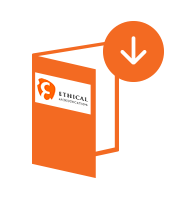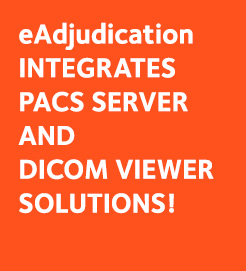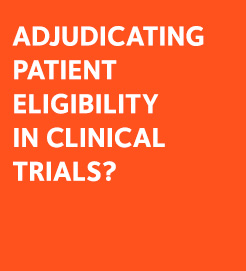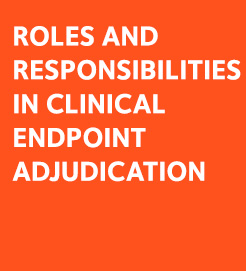The Medical Devices (MDs) sector has drawn the attention of regulators in recent years. The aim of new regulations is that safe and effective MDs that incorporate the latest technological and scientific progress would be timely made available to patients and healthcare professionals without undue risks for the users. As it is the case for drugs and vaccines, independent clinical endpoint adjudication is critical to the assessment of the safety and efficacy of medical devices. In addition, post-marketing data used for market surveillance may also benefit from independent adjudication to ensure the accurate assessment of real-world clinical outcomes.
You can also download this Blog Post in PDF format for a 'Later Read'. Click here to Download for free.
Medical Device Clinical Endpoint Adjudication
Adjudication of clinical endpoints has been widely used in drug and vaccine trials to enhance the quality, validity, and integrity of study results and has become increasingly common in “high-risk” medical device trials (See box below). The US FDA Breakthrough Devices Program guidance document, indicates clearly the importance of setting and measuring endpoints in medical devices clinical trials: “…clinical trials … may include consideration of the following:
- prespecified endpoints regarding the minimum clinically meaningful effect;
- intermediate and surrogate endpoints where evidence is provided to support the endpoint as reasonably likely to predict the clinical benefit of a device;
- composite endpoints with an explicit rationale for the meaningful effect size; and
- adaptive study designs”.
What is Different in Medical Device Studies from Drug and Vaccine Trials?
When compared to pharmaceuticals and biopharmaceuticals R&D, Medical Device studies carry several specificities that favor the use of independent endpoint adjudication:
- Studies are not blinded. Medical Device trials are often open labeled because the device investigated cannot be “hidden” from the investigator or the patient.
- There is increased Investigator’s bias risk. Investigators and site staff may skew assessment either to favor a device or to find inconveniences based on their own perception of the technology, the possible additional burden for the caregivers or other subjective elements.
- Post-marketing data collected in the real-world setting (“Real World Data”) may highlight opportunities to improve the safety and efficacy of a medical device.
Medical Devices Endpoint Adjudication Process
Regardless of the differences between drugs and devices, the overall scientific approach for proving efficacy and safety including robust methodology, outcomes and endpoint definition, emitting a hypothesis and defining the conditions for success or failure apply identically in the drug and MD arenas. Similarly, the adjudication process is identical between medical devices and drugs and vaccines trials. The key steps (adjudication charter development, adjudication committee members’ selection and training, software selection and configuration…) remain the same. Moreover, multi-media processing (pictures, scans, medical imaging, videos, etc.) are often needed to allow the full assessment of devices and their effects. A clinical adjudication software platform must be able to either display directly or link to dedicated sources to allow reviewers to assess multi-media-based information.
The Risk-Based Regulatory Approach for Medical Devices
A medical device is “any healthcare product that does not achieve its principal intended purposes by chemical action or by being metabolized.” As such, contact lenses worn every day by consumers are considered Medical Device, and so are the most sophisticated pacemakers, hip replacements or in-vitro diagnostics. In order to “better protect patients from defective medical devices” and “improve the safety, quality and efficacy of medical devices” regulations around the world recognize this diversity.
Device classification in the US depends in part on the intended use of the device and indications for use but also on the risk it poses to patients or users. Class III (high risk) and some Class II (intermediate risk) devices will require clinical trials before they can be released on the market.
Similarly, in the European Union, medical devices and in-vitro diagnostic medical devices are divided into four risk classes. Depending on the risk class of the product, a different conformity assessment procedure is foreseen before the product can be placed on the EU market. For certain high-risk devices, the EU Regulations require the Notified Bodies to consult with an expert panel before placing the device on the market. According to this procedure, an expert panel could provide a scientific opinion to the Notified Body on its assessment of the manufacturer’s clinical file. While the Notified Body would not be bound by the opinion, it would have to provide a justification for not following it.
Bibliography & Useful Links:
Medical Devices Regulation
-
Food and Drug Administration (USA):
- Overview of Device Regulation
- Balancing Premarket and Post-Market Data Collection for Devices Subject to Premarket Approval -
Guidance for Industry and FDA Staff (April 2015)
- Use of Real-World Evidence to Support Regulatory Decision-Making for Medical Devices -
Guidance for Industry and FDA Staff (August 2017)
- Examples of Real-World Evidence (RWE) Used in Medical Device Regulatory Decisions
- Breakthrough Devices Program – Guidance for Industry and FDA Staff (2018)
Clinical Endpoint Adjudication Tools and Resources
-
Regulatory Affairs Professionals Society (RAPS):
- The Regulatory Strategist Toolbox: Clinical Endpoint Analysis Tools
-
Ethical GmbH:
- Endpoint Adjudication Resources
DOWNLOAD NOW THE FREE ENDPOINT ADJUDICATION HANDBOOK
The Complete Manual / Reference Book (34 pages) with all the topics related to the Independent Endpoint Adjudication Committees Management








